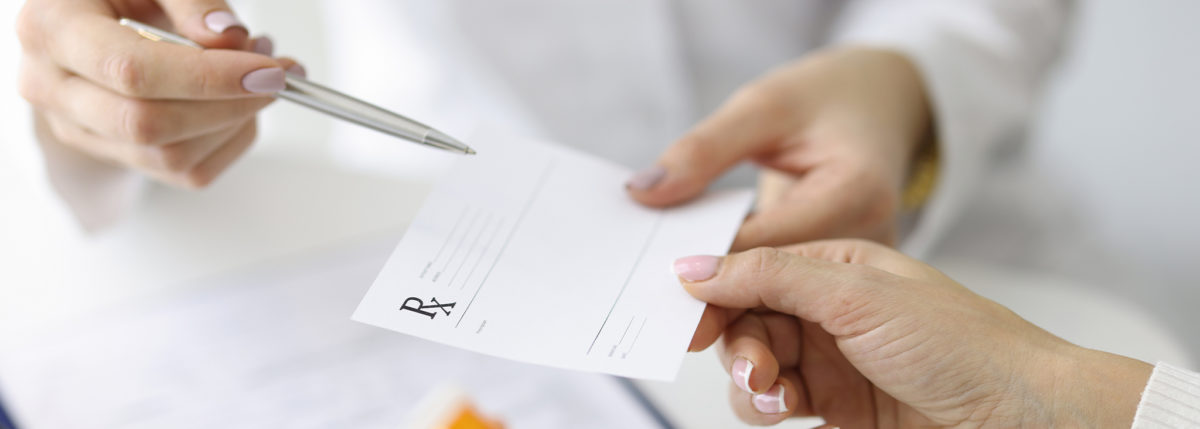Rule by Intimidation: The Contract Keeping Pharmacists Quiet
When purchasing prescription drugs in the U.S., using your insurance might not be the cheaper option. Sometimes drugs purchased with cash are in fact cheaper and there’s no way of knowing it. Gag rules that still exist in most states prevent pharmacists from telling customers that a cash option is the better one. For example, a consumer pays a co-pay of $100 with her insurance plan for a drug that if she had paid cash would have cost $70.
This difference in price or “clawback” goes to the pharmacy benefits manager (PBM) who is the middleman for negotiating drug prices between pharmacy and pharmaceutical distributor.
Prescription drug pricing in the United States is a multi-layered problem involving these three players, and the part that PBMs play often occurs behind the scenes.
According to a recent report by the White House’s Council of Economic Advisors, “The PBM market is highly concentrated. Three PBMs account for 85 percent of the market, which allows them to exercise undue market power against manufacturers and against the health plans and beneficiaries they are supposed to be representing, thus generating outsized profits for themselves.”
Antonio Ciaccia, director of Government & Public Affairs at Ohio Pharmacists Association said, “This is the collateral of the stronghold that these three companies have over the market place.”
Since the 2015 merger of United Health, OptumRx and Catamaran, this company along with Express Scripts, CVS Health (formerly CVS Caremark) comprise of the biggest three.
This practice is technically legal though under basic contract law. “PBMs have language in a contract about how specific a pharmacist can be,” said Ciaccia. “They are told not to tell the patient anything that could be considered proprietary.”
While legal still in some states, the lack of price transparency is unethical and inhibiting a free market of trade, not to mention costing the consumer. More, the companies that are perpetuating it are well aware that the conduct is unscrupulous by the method in which they “encourage” pharmacists not to break the gag rule.
Antonio Ciaccia described an incident where a pharmacy in the Columbus, Ohio, market told the patient that they were being charged more than the drug’s cash price by using their insurance and the patient brought a complaint to the insurance company. Soon after, Ciaccia said the pharmacy received a warning that their contract would be canceled if they continued to disclose the pricing information to customers.
When asked what the warning letters look like, Ciaccia said, “Rarely do those solicitations occur by snail mail. Usually it comes in a phone call. Paper trails are uncommon.”
Ciaccia said he did know of a couple pharmacies that were disclosing some PBMs’ practices to employers and the PBMs came back and canceled their contracts. Attributed to this fact or not, they did go out of business.
“Typically when the pharmacy gets a warning, they change how they do business,” said Ciaccia. “It is rule by intimidation.”
People are talking though and standing up to the powerhouse PBMs. And the whistleblowers are typically the pharmacists. At the risk of their livelihoods, they are seeking out legislators to tell them there’s a problem.
One way to change this practice is state-by-state legislation since each state has a regulatory body for determining how insurance companies conduct business, and passing anything federally typically takes more time. At least 15 states have already been successful in throwing out the gag rule with clawback and they include: Maryland, Arkansas, Louisiana, Maine, Kansas, Connecticut, North Carolina, South and North Dakota, Georgia, Minnesota, Virginia, Mississippi, Texas, Ohio and most recently, Alaska.
“Insurance is intended to save consumers money,” Sen. Susan Collins (R-Maine) said. “Gag clauses in contracts that prohibit pharmacists from telling patients about the best prescription drug prices do the opposite.
“Americans have the right to know which payment method—insurance or cash —would provide the most savings when purchasing prescription drugs.”
Some argue that customers paying over market prices for drugs is uncommon; however, a 2016 survey of independent pharmacists revealed that of 9.5 million claims across the US, 2.2 million involved overpayments. Based on this survey, costumers are overpaying for prescription drugs nearly a quarter of the time.
Worse, 12 of the 20 most prescribed drugs had overpayment rates above 33 percent.
While the average overpayment per member was $10.51, one large PBM reported the popular type 2 diabetes drug metformin was $10.67 per member.
The National Community Pharmacists Association (NCPA) found in another survey of 640 pharmacists that “the Aetna and CVS Caremark drug plans are the most egregious in this area [of clawbacks].” The controversial merger of these two companies was approved by Congress just last year.
“The PBMs have their tentacles in everything,” said Ciaccia. “They’re demanding rebates from pharmaceutical companies. The pharmaceutical companies raise their prices to compensate for those rebates and drug prices continue to go up.”
“When in doubt, ask the cash price,” advised Ciaccia. “If the patient initiates the conversation then the pharmacist isn’t viewed as being the ‘trouble maker’ in the eyes of the PBM.
Ask: ‘Would this be cheaper if I paid cash?'”





